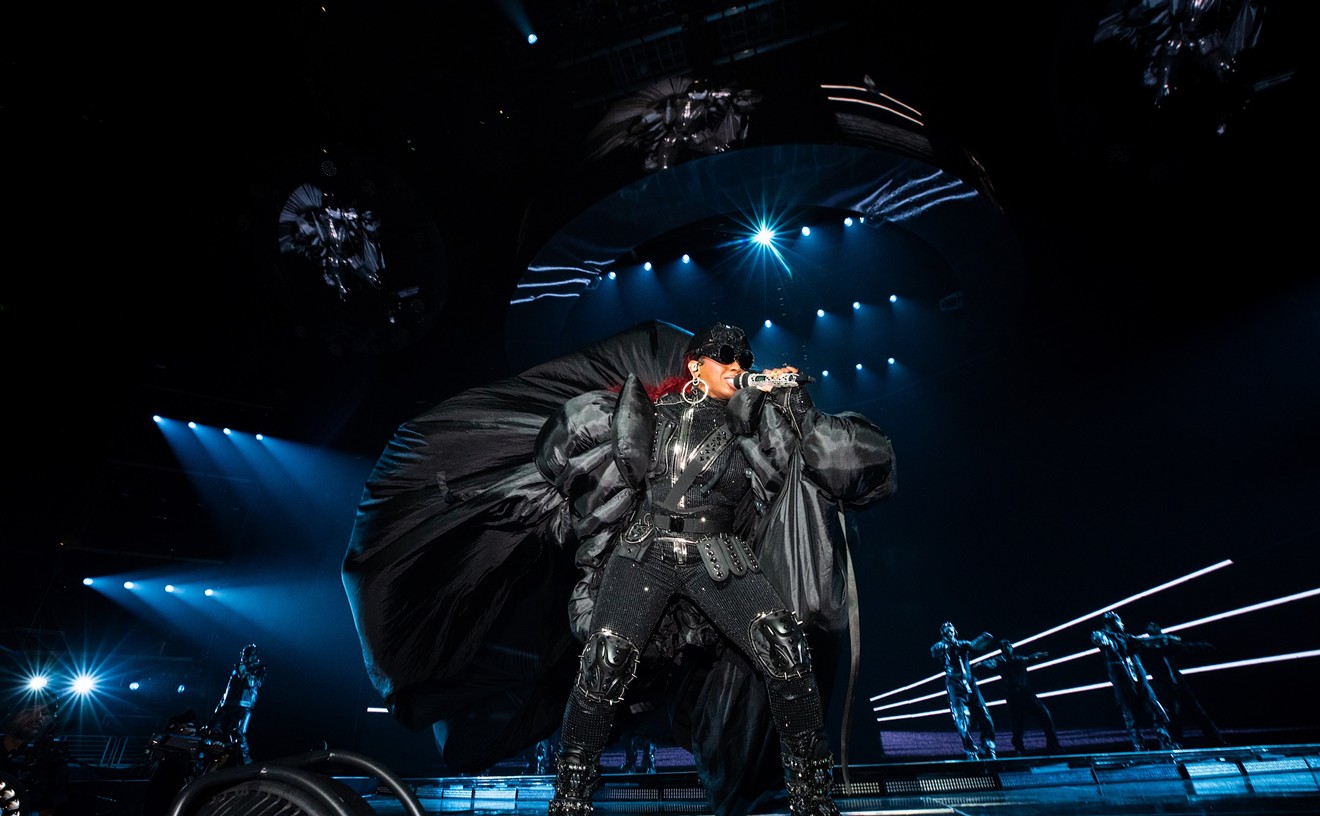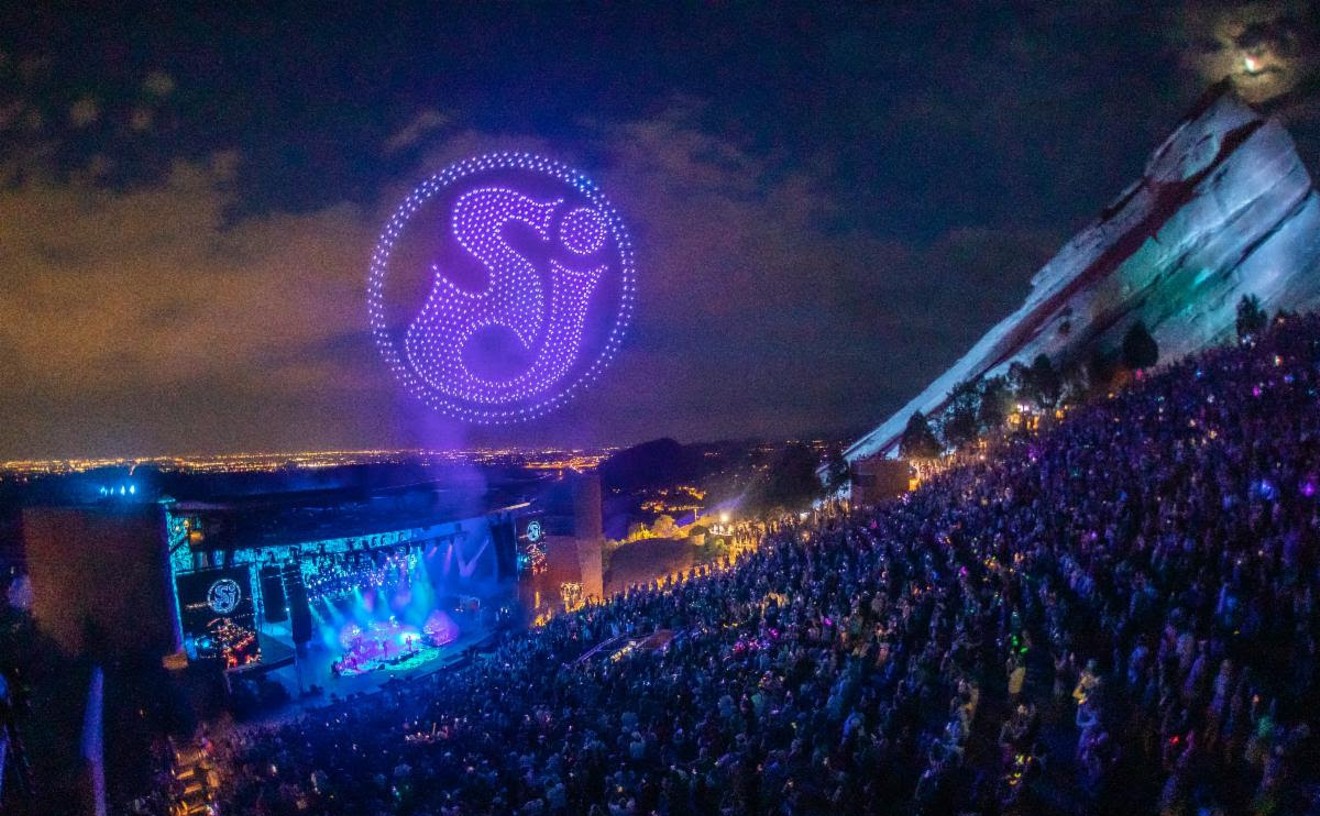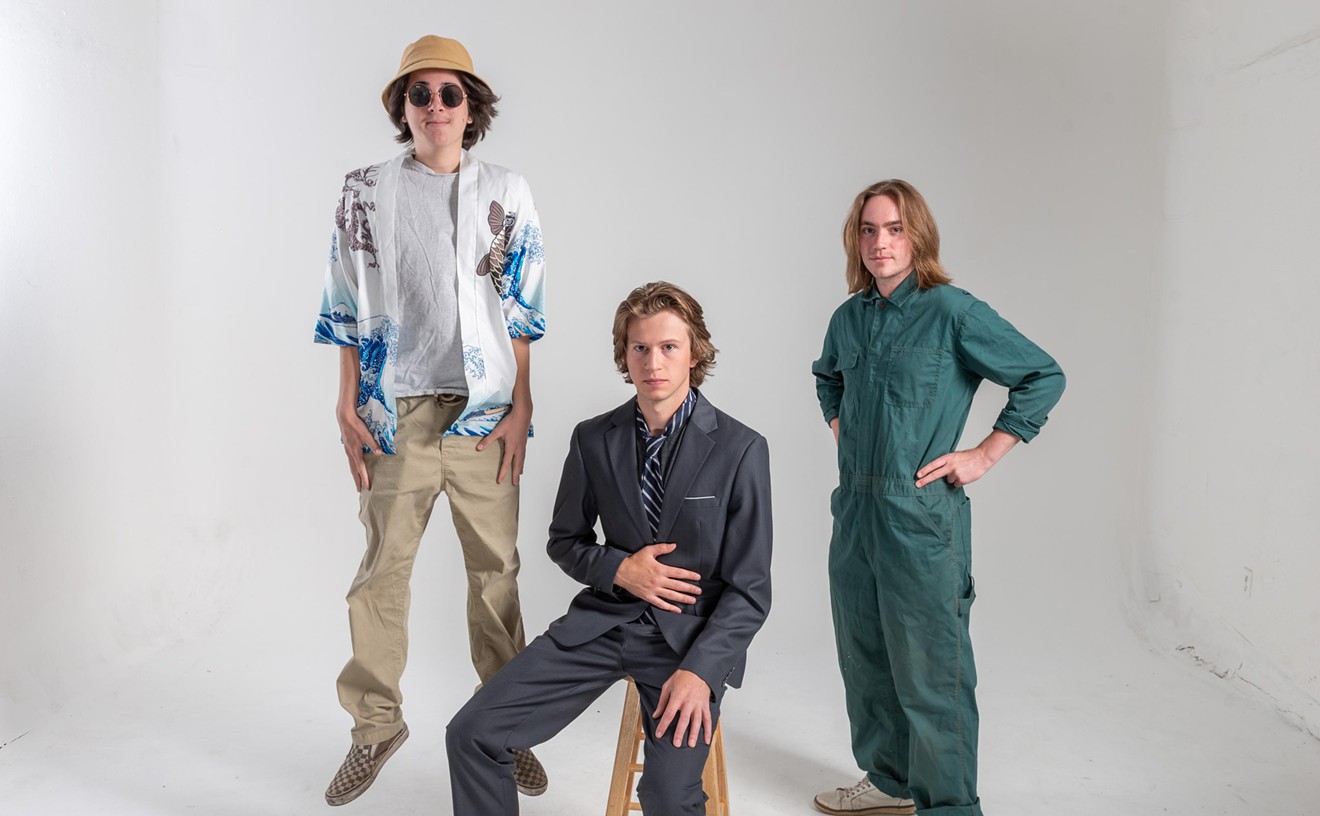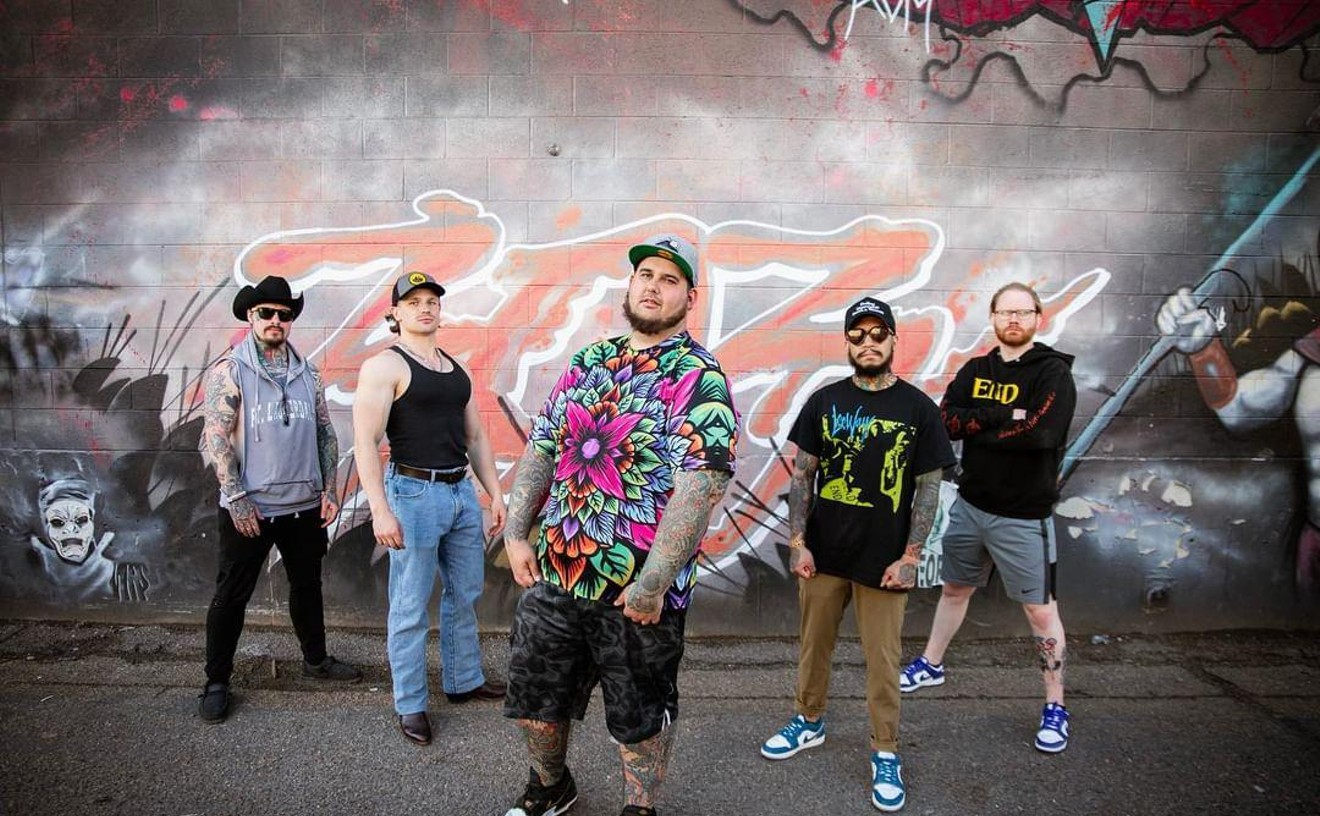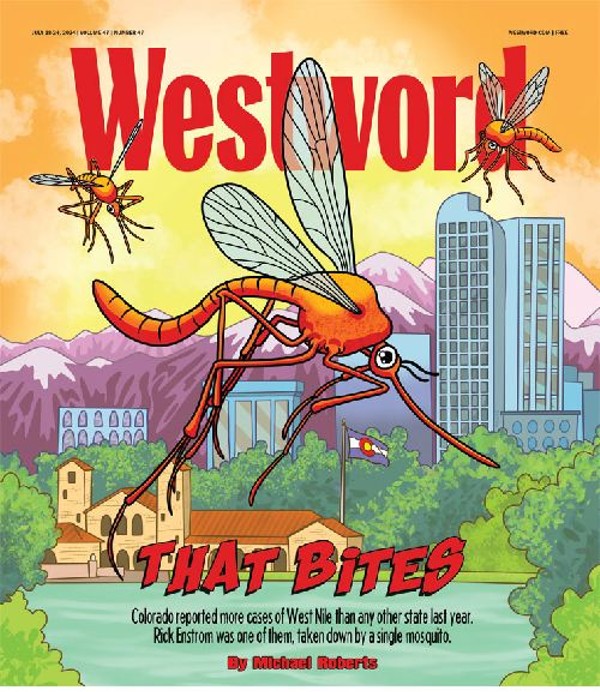In the early days of the Folklore Center (at its original location at 608 East 17th Avenue), the store was pretty much the only place of its kind between Chicago and the West Coast. Rock heavies such as Jim Morrison and Frank Zappa, bluesmen like Muddy Waters and Sonny Terry, bluegrass legends Bill Monroe and Flatt and Scruggs, and folk-pop stars like the Mamas and Papas all stopped in the store when they were in town.
In advance of this weekend's ceremony, we spoke with Tuft about being inducted into the Colorado Hall of Fame, the history of the Denver Folklore Center, which celebrates its fiftieth anniversary in May, promoting concerts and his new album, Treasures Untold.
Westword: Were you surprised when you heard about getting inducted into the Colorado Music Hall of Fame?
Harry Tuft: Totally shocked. It was absolutely out of the blue for me. I knew about the awards from last year. It never would have occurred to me that I would have been nominated. I felt it might be after I die or something. It really was a shock.
What does being inducted mean to you?
It's means what kind people have said to me in passing years and more in recent years, that the Folklore Center and I as the owner have had an influence on their lives, in general, particularly in their musical life, but in a lot cases giving their growing up more richness. Now we're in our fiftieth year and about to celebrate that in May. I'm hearing from people with that in mind and writing very nice things about what it meant to have a place to come to when they were growing up or when they came into town or when they were working on their music or in some cases, they were trying to make a career out of their music.
It seems like the Folklore Center is much more than just a music store. It's a meeting place for musicians, and you do your weekly jam sessions on Mondays.
In the early days, it was really sort of the Wells Fargo stop for musicians coming from once coast to the other. Pretty much between Chicago and the West Coast, we were pretty much it for places to stop. I did advertise in such a way to let people know that we were around and word got out. So in the early days, it was kind of an oasis. Then from the fact that I did some producing of concerts and I added a school and a concert hall over time, which, at one point, I got people from the community and all of us together we formed Swallow Hill. Swallow Hill really carried the flag for instruction and performing and just continued to grow and get better and better and bigger and bigger, until they were really offering, as they are today, a tremendous amount of facility to the whole front range. I was pleased that I was able to help get that started.
Janet Feder told me about your book of autographs of people that you've met or who have come in the store. There were some pretty big names in there.
Right. It was a pretty good list. In terms of the folk world, it was lots of people who came through, but who were not very well known at the time, like David Grisman, Paul Kantner of the Jefferson Airplane. There were certainly folkies like Pete Seeger and Joan Baez and Jack Elliott. Also Roger Miller came in to get some work done on his violin. Jim Morrison was playing around the corner at Mammoth Gardens and he came in. Barry Fey and I brought Frank Zappa to Denver, so he came in. A lot of the blues guys like Muddy Waters and Sonny Terry. Bill Monroe, Flatt and Scruggs and folks like that. Mamas and Papas and Tom Phillips.
Where was the original location of the Folklore Center?
The address was 608 East 17th Avenue, at 17th and Pearl, right off of downtown Denver. There's a 7-11 there now.
You said in a video interview that you took a ten-year hiatus after you closed that location, right?
Right.
To explore different things, but then you discovered that there wasn't anything more satisfying than running the Folklore Denver, right?
Yep. I started it when I was 27. I ran it for eighteen years, so I was kind of burned out, I guess you could say. So one of my managers took the name and some inventory and opened up on South Broadway for three years and tried to make a go of it, which, unfortunately, did not work that well. So I came in and closed it, so the name would stay clean. I went on to do other things for ten years.
Like you say, this was meaningful to me, and I've said sometimes that I opened the first time because I thought there was a need for there to be a Folklore Center in Denver. I opened the second time because there was a need for me to have a Folklore Center. So the needs kind of changed over the years. I have to say that people still feel there's a reason because of the services we offer and sometimes the atmosphere that we offer.
Why would say it's so satisfying running the store?
Well, I think I've always wanted to serve people in one way or another, and I don't have a professional skill. There's a way I can serve people on a one-to-one level, and you might say a pretty low level. What I mean by that is that it's a kind of transaction between people that involves some instrument or some learning of some sort. I really like that contact with people. It seems to be a good forum for that to happen.
Going back to your ten-year hiatus, did you try to be a professional musician during that time?
I did some of that. I did have success at that. I was in a calypso band for about three years. That was very satisfying. That was probably some of the most fun I've had musically. That and performing with this group -- we just celebrated out fortieth year together -- called Grubstake. With Grubstake we had a chance to do stuff, and I went back to teaching, which is another kind of contact that I really enjoy.
I did music whenever I could, and I at one time, I had a small voice-over recording studio in my home, and so I did some professional recording with people. That was enjoyable. I worked for a while trying to turn an old synagogue into an arts and entertainment center, which didn't really work out as much as I'd liked to have it. But this way of contacting and helping the public seemed to be the most rewarding.
Do you still teach these days?
I don't teach now. If I were able to pull back somewhat from the store -- the store is a plenty full time job -- I would consider doing some group teaching as well. I really enjoy that. I think I have some ideas to help people with.
Do you have any really memorable moments or encounters that have happened in the store or from putting on shows?
One of the most memorable was when I brought Joan Baez to Red Rocks. I'd given some tickets to my mechanic who worked on my car. He was an older gentleman who'd never been to Red Rocks. After Joan was on stage, I walked to the top, and oddly enough, he was there, and he was all choked up. It suddenly hit me that he was choked up because he actually knew somebody who had done this, which, in his way, was pretty over the top, so to speak.
And it was then that I suddenly realized what I had done. I'd sort of been caught up in the activity of getting it all done -- and I'm just this guy from Philadelphia who has a little store in Denver -- and I got this nationally known woman, and she's on stage at this incredible facility. And that's what I did. So that in itself was pretty overwhelming.
It was at the same time -- we did that concert because she actually wanted to meet the Beatles.... My most memorable event was standing in the back of the Beatles dressing room watching Joan Baez meet and interact with the Beatles. And then stand on the side of the stage, really in full of the audience, and feel the needles of the screams. It penetrated your entire body. So that experience was pretty close to the top.
One other really nice experience was when I became friendly with Dick Lamm through some political fundraising for the Johnson-Goldwater campaign, and we got to be pretty good friends. Henry Fonda was coming to town for a one-man show, so I invited Dick -- at that time he was governor -- to join me to see this play.
I knew the stage guys and afterward we went backstage, and I was able to introduce him to Henry Fonda, who I'm sure was a hero for both of us. I said something to him like, "Mister Fonda, I'd like you to meet Dick Lamm. He's the governor of this state." And Fonda stopped for a second, he looked at him and said something like, "Well, they make them pretty young these days." That was pretty cool for me.
I had a chance to spend a week skiing in Aspen with Pete Seeger after I brought him to a couple concert here on the Front Range. Those are some things that come to mind.
Going back to Joan Baez, how did you originally meet her? Was that through your store?
I had advertised in a magazine called Sing Out! that I had a store in Denver. Joan's manager was a man named Manny Greenhill and was arranging a tour for her. He was out of Boston. He called and said he wanted to bring Baez here for a concert in March and asked if I'd done any promoting. I said, "No." He asked why, and I said I didn't have any money. He said, "If you're willing to do it, I'll give you a percentage of the gross and walk you through how to promote it."
So I said, "Fine." That's pretty much how it happened. I booked the Auditorium Theatre, which is now the Ellie Caulkins Opera House, and we sold it out. That's how I got into the business of promoting. Then I promoted her at Red Rocks and Pete Seeger, and then I did a series of concerts at the Auditorium Theatre, one with Flatt and Scruggs, one with Ravi Shankar, one with Ian & Sylvia and Charles Lloyd Quartet.
Then I got a call from Seeger's manager asking how he would do at Red Rocks and if would sell out. I said. "No." He said, "What about Arlo Guthrie?" "Alice's Restaurant" was pretty hot at that point. I said, "He would do well, but I'm not sure he would sell out." So the question was what about the two of them together. That was a no-brainer. So they came and did their first concert together for me and then did another one a couple of years later.
Baez, I promoted her three more times. I brought Judy Collins here. I also brought in folks who were less well known but pretty significant to me. In our concert hall, we had Taj Mahal, Ry Cooder, Bonnie Raitt and a bunch of blues guys. It's been a rich experience.
So that first Joan Baez show was the first show you promoted?
I was fortunate in that she'd never been to Denver and her popularity was such that selling out 2,200 seats was not a problem.
When was that?
March 15, 1964.
Can you tell me about making your new album, Treasures Untold? You've got quite a few guests on there, including Janet Feder, who also produced it.
I sure do. My friends were very generous in giving their time and just their willingness to be a part of it. I've known Janet Feder for a number of years, and she's had a history with the Folklore Center for probably even longer than our relationship as such. We've gotten along so well, and I trust her musical sensibility so much that when it came to think about a producer for this album, I just thought she would do a great job.
Her first reaction was, "I've never produced an album." To me, that didn't matter. She had all the qualities that I would look for in a producer. She agreed, and we used a studio of an associate of hers, Colin Bricker, and it turned out that Janet, Colin and I as a trio of folks meshed beautifully. They were supportive, and they were honest, so when things didn't work they were willing to say so. Fortunately there were not very many of those.
It was just a wonderful experience. We cut the fourteen original tracks over a three-day period, which is pretty unusual. Then we just brought some people in and we sent some tracks out. That process is probably which took the longest. I've known Judy Collins since the '60s and I had done a song that I learned from an album of hers, a Leonard Cohen song. So I thought it would be kind of neat, if she was willing, to do a harmony to that song on my album. Her schedule was such that it took a while to get that done, but it was very rewarding. She added in a verse herself and I think it's a very nice result on that track.
With everybody else, people came in who were in the area. Wonderful support from Rich Moore and Mollie O'Brien and Eric Thorin. Rich and Eric really were responsible for any arrangements for which we got to, and Mollie was there open and willing to add into whatever came up that sounded like her voice would add to. She just has an absolutely incredible voice. She's a consummate professional and wonderful to work with. All those pieces, they just worked so nicely.
Otis Taylor is on a few cuts, and I've read about how he got his musical schooling in your store.
Right. I wanted to include Otis on the album so we were doing a blues, and I asked him to play some harmonica on that and one of the other songs, "One Mint Julep." There's a part in there for the father to say something in the song. The part that we had on tape was just too white, so we asked Otis if he would do it, and he just nailed it. It's great to have Otis be part of that.
Follow Backbeat on Twitter: @westword_music





